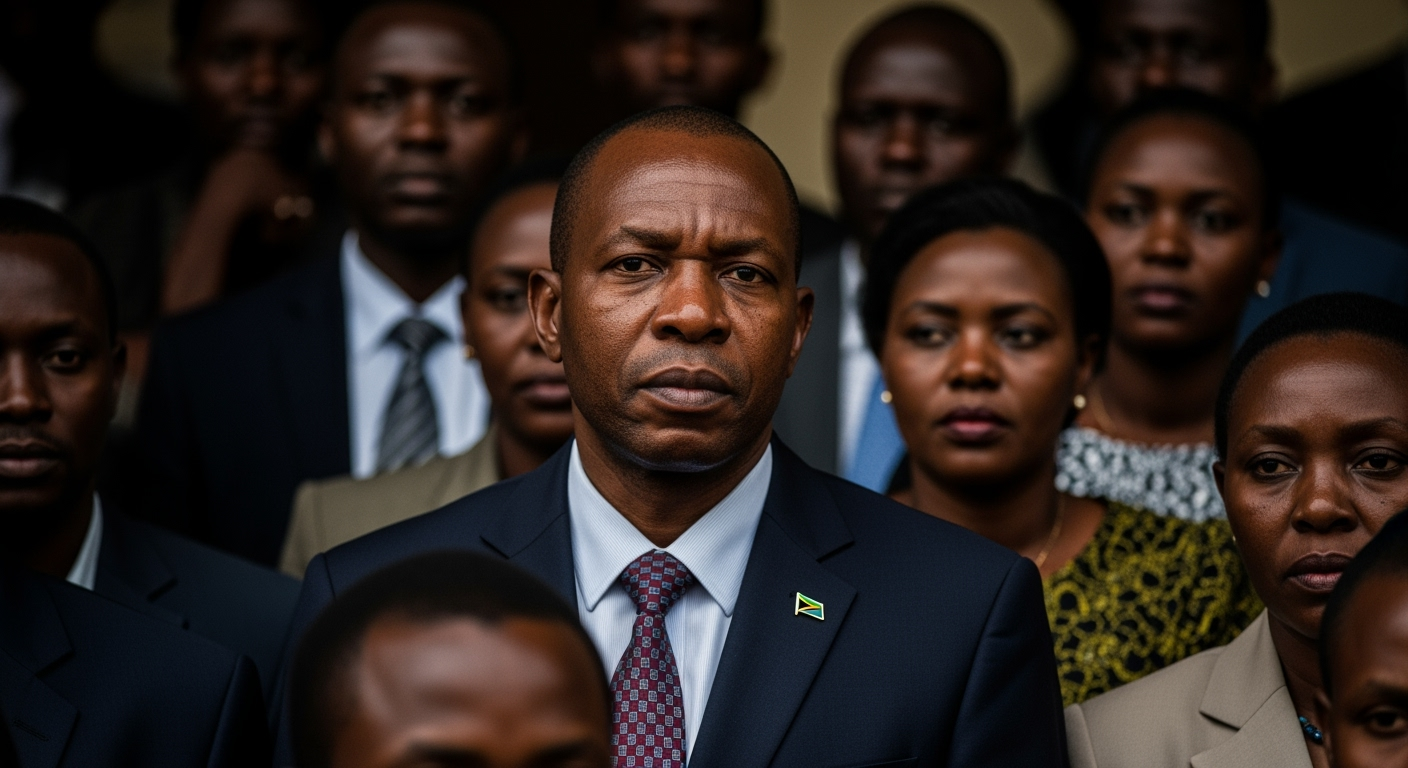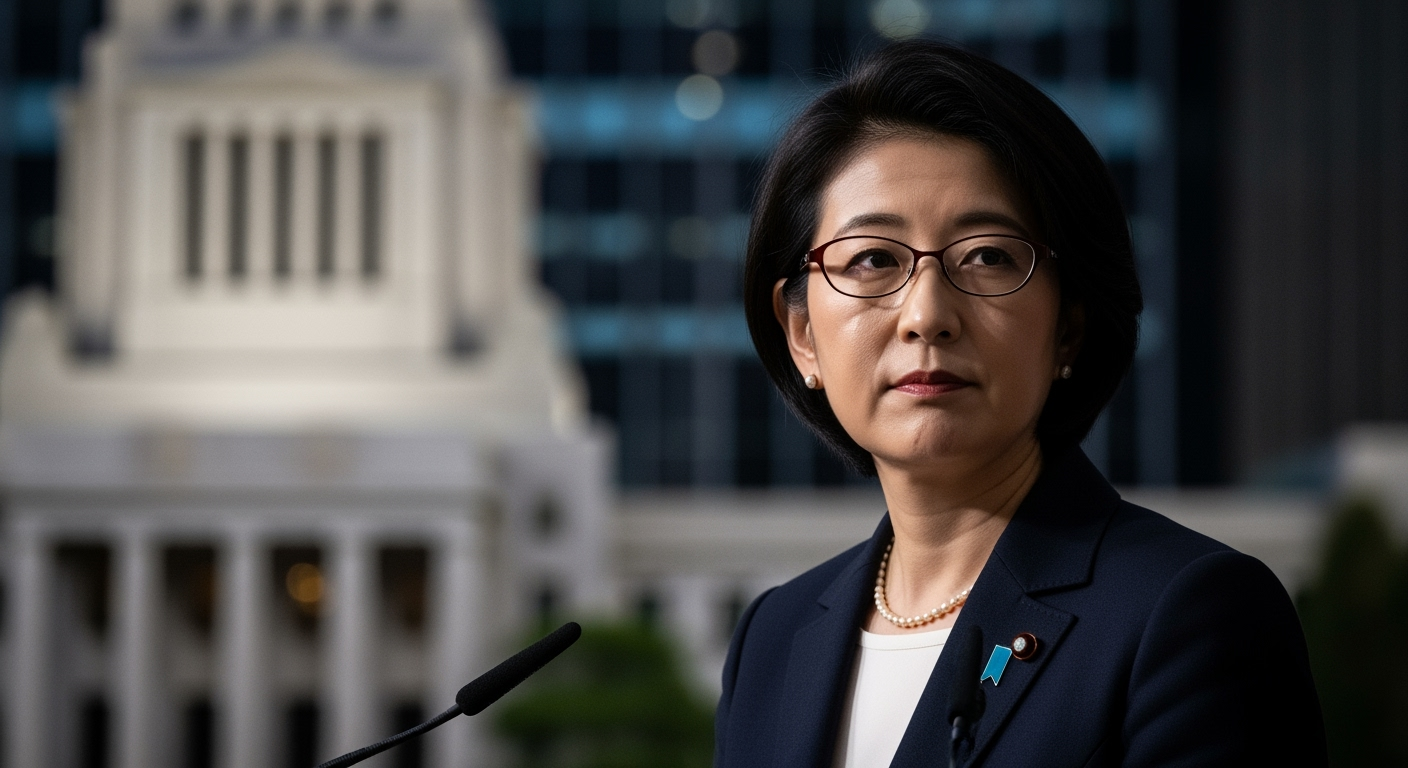Related Articles

Canada Narrows Submarine Bid to German and South Korean Firms in Multi-Billion Dollar Procurement Race

Germany's Syrian Deportation Plan: A Tightrope Walk Between Politics and Harsh Realities





TOKYO – Sanae Takaichi has shattered a significant glass ceiling, becoming Japan's first female Prime Minister and President of the Liberal Democratic Party (LDP) on October 21, 2025. Her historic ascent places her at the helm of the world's fourth-largest economy at a critical juncture, as the nation grapples with persistent economic stagnation and an increasingly volatile regional security landscape. Takaichi, a staunch conservative often dubbed Japan's "Iron Lady," now faces the immediate and daunting task of navigating these dual crises while solidifying her fragile coalition government.
Her premiership marks a pivotal moment for a country long criticized for its low representation of women in top political and corporate roles. However, the symbolic victory is overshadowed by the immense practical challenges that demand urgent attention. Takaichi's ability to revitalize a struggling economy and strengthen Japan's security posture amidst geopolitical tensions will define her tenure and could shape the nation's trajectory for decades to come.
Sanae Takaichi, 64, rose through the ranks of the LDP, building a reputation as a policy wonk and a protégée of the late Prime Minister Shinzo Abe. Graduating from Kobe University, her career path included stints as an author, legislative aide, and broadcaster before entering politics in 1993 as an independent. She later joined the LDP in 1996 and has since held various ministerial posts, including Minister for Internal Affairs and Communications and Minister of State for Economic Security.
Her political ideology is firmly rooted in hard-line conservatism and nationalism. Described as ultraconservative, Takaichi is a member of the ultranationalist organization Nippon Kaigi and an admirer of former British Prime Minister Margaret Thatcher, a comparison that earned her the "Iron Lady" moniker. Her policy platform emphasizes a "Japan First" approach, prioritizing national capabilities and conservative social values. She opposes same-sex marriage, takes a harder stance on immigration, and supports the male-only imperial succession.
Takaichi's path to the premiership was not without hurdles. After winning the LDP leadership race, the party's long-time coalition partner, Komeito, initially abandoned the alliance following corruption scandals within the LDP. This forced Takaichi to quickly forge a new alliance with the right-wing Japan Innovation Party (Ishin) to secure enough votes in parliament, resulting in a minority government. This coalition's inherent fragility, with Ishin holding some fiscally conservative views that contrast with Takaichi's expansionary stance, presents an immediate political challenge.
At the heart of Takaichi's domestic agenda is a commitment to economic revitalization, often dubbed "Sanaenomics," which largely echoes her mentor Shinzo Abe's "Abenomics" strategy. She advocates for aggressive proactive government spending, loose monetary policy, and structural reforms to stimulate growth. This approach is intended to maintain excess demand and encourage investment, with a particular emphasis on government growth investments and strategic spending in areas like innovation and digital infrastructure.
However, the Japanese economy she inherits faces deep-seated structural challenges. Japan has grappled with economic stagnation since the 1990s, and its recovery from the COVID-19 pandemic remains fragile. A central and arguably most entrenched issue is the nation's demographic crisis. With a fertility rate of just 1.15 in 2024 and a continuously declining and aging population, Japan faces acute labor shortages and mounting social security costs. The working-age population constituted only about 59.6% of the total in 2024, the lowest among OECD countries.
Furthermore, Japan's public debt stands at approximately 260% of its Gross Domestic Product, one of the highest among developed nations. While Takaichi's policies lean towards further fiscal expansion, she has also expressed that "fiscal consolidation is ultimately necessary," seeking to avoid perceptions of policies that could trigger market turmoil.
The country is also battling inflation, which currently hovers above the Bank of Japan's 2% target, eroding household purchasing power and fueling public frustration. Complicating matters is a historically weak yen, which hit a 37.5-year low against the U.S. dollar in July 2024. While a weaker yen can boost exports, it also drives up import costs, a significant concern for a nation reliant on imported fossil fuels. Takaichi supports a loose monetary stance and a weaker yen, believing it will boost corporate profits and the stock market. She also emphasizes household support through refundable tax credits rather than directly targeting wage increases, believing wages will rise naturally under tight macroeconomic conditions.
On the security front, Prime Minister Takaichi is known for her hawkish views and commitment to strengthening Japan's defense capabilities. She has consistently advocated for increasing defense spending from 1% to 2% of GDP and seeks to amend Article 9 of Japan's pacifist constitution, which currently prohibits the country from maintaining a war-fighting force. These positions reflect a growing sentiment within Japan that the nation must bolster its self-defense in an increasingly unpredictable regional environment.
Japan's security environment is deemed the most severe and complex since World War II, primarily driven by the actions of its neighbors. China's rapid military modernization and assertive actions in the East and South China Seas, as well as rising tensions in the Taiwan Strait, are central concerns. Takaichi is considered a "China hawk" and supports the status quo in the Taiwan Strait, maintaining strong ties with Taipei. North Korea's continued development of nuclear weapons and ballistic missile programs, including intermittent launches that have traversed Japanese airspace, also poses a direct and urgent threat.
Takaichi also recognizes the critical importance of the US-Japan security alliance. However, the potential for a renewed "America First" approach from a future US administration, possibly led by former President Donald Trump, could introduce complexities, including demands for Japan to shoulder a greater defense burden. Takaichi's domestic support for a "Japan First" approach could collide with such external pressures, creating a delicate diplomatic balancing act.
Her past visits to the controversial Yasukuni Shrine, which honors Japan's war dead including Class A war criminals, have historically strained relations with China and South Korea. While she softened her stance on future visits during her leadership campaign, this remains a sensitive issue that could easily flare up and complicate regional diplomacy.
Sanae Takaichi's premiership marks a defining moment for Japan. As the nation's first female leader, she carries the weight of historical expectation and the immediate burden of immense economic and security challenges. Her conservative, nationalist platform, characterized by fiscal expansion and a hawkish defense posture, represents a distinct shift in leadership for the LDP.
Her ability to navigate the intricacies of a fragile coalition, deliver on her economic promises while managing inflation and debt, and assert Japan's interests in a volatile geopolitical landscape will be closely watched both domestically and internationally. The coming years will reveal whether Japan's "Iron Lady" can forge a path of renewed prosperity and security for the nation.